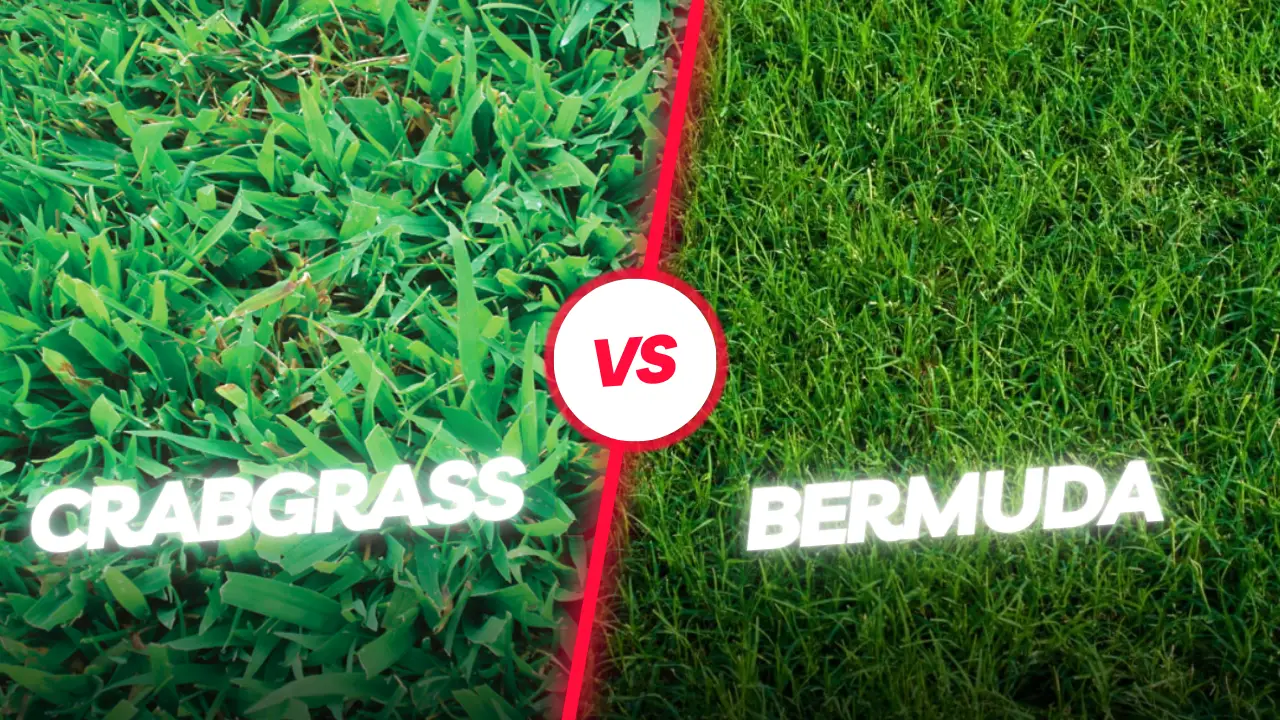When it comes to maintaining a beautiful and healthy lawn, understanding the characteristics and distinctions between different grass types is crucial. Two common grasses that often spark confusion among homeowners and garden enthusiasts are crabgrass and Bermuda grass. Although both can be found in lawns and landscapes, they differ significantly in their growth habits, appearance, and maintenance requirements. In this article, we will delve into the specifics of crabgrass and Bermuda grass, highlighting their unique traits, growth patterns, and effective control methods.
Characteristics of Crabgrass
Crabgrass, scientifically known as Digitaria, is an annual grass that thrives in warm climates and is commonly considered a weed. It possesses several notable characteristics that set it apart from other grass varieties. One key feature is its quick growth rate, allowing it to rapidly invade lawns and compete with desirable grass species.
To identify crabgrass, look for its wide blades that resemble crab legs, hence the name. Additionally, it tends to grow in clumps and has a light green or yellowish color. Crabgrass is highly adaptable and can thrive in various soil conditions, making it a persistent nuisance in many lawns.
Characteristics of Bermuda Grass
On the other hand, Bermuda grass, scientifically known as Cynodon dactylon, is a warm-season grass that is widely utilized in lawns, sports fields, and golf courses. It has become popular due to its durability, heat resistance, and ability to withstand heavy foot traffic. Bermuda grass forms a dense turf that is both aesthetically pleasing and resilient.
Bermuda grass is known for its drought tolerance and can stay green even during periods of water scarcity. It has thin, pointed blades with a dark green color and a creeping growth habit. These characteristics make Bermuda grass an excellent choice for areas with warm climates and high sun exposure.
Growth Habits
Understanding the growth habits of crabgrass and Bermuda grass is crucial for effective lawn management. Crabgrass typically germinates and establishes itself during late spring or early summer when soil temperatures rise. It spreads quickly by producing large numbers of seeds, which can remain dormant and viable in the soil for years.
Bermuda grass, being a warm-season grass, experiences active growth during the summer months. It has a rhizomatous and stoloniferous growth habit, meaning it produces above-ground stems that spread horizontally and below-ground stems that extend vertically. This aggressive growth pattern enables Bermuda grass to quickly fill in bare spots and choke out competing weeds.
Due to their contrasting growth habits, crabgrass and Bermuda grass often compete for space and resources in lawns. Crabgrass can outcompete desirable grass species and become a dominant presence if not adequately managed.
Weed Control and Prevention
To maintain a healthy lawn, it is crucial to implement effective strategies for crabgrass and Bermuda grass control. Preventing crabgrass invasions requires a multi-faceted approach. It includes proper lawn care practices, such as regular mowing at the correct height, adequate watering, and appropriate fertilization. Additionally, applying pre-emergent herbicides in early spring can help prevent crabgrass seeds from germinating.
Similarly, preventing Bermuda grass from encroaching into other grass species or landscape beds requires diligence. Creating physical barriers such as edging can help contain Bermuda grass and prevent its lateral spread. Additionally, spot treatments with post-emergent herbicides can be used to control any Bermuda grass outbreaks that occur.
Maintenance and Care
Maintaining a crabgrass-free lawn involves adopting proactive measures. Regular mowing, ensuring the grass is not cut too short, and maintaining a healthy soil pH are important steps in preventing crabgrass from taking over. A well-nourished and dense lawn can naturally suppress crabgrass growth.
Bermuda grass, on the other hand, requires specific maintenance practices to thrive. It benefits from frequent mowing to promote denser growth and to keep the grass at an optimal height. Bermuda grass also requires regular watering, especially during dry periods, and periodic fertilization to replenish essential nutrients.
Best Environments and Uses
Understanding the best environments for crabgrass and Bermuda grass helps in making informed decisions regarding their usage. Crabgrass typically thrives in open areas with abundant sunlight and in soils that are disturbed or compacted. It is commonly found in lawns, gardens, and along roadways.
Bermuda grass, being a warm-season grass, flourishes in regions with hot summers and mild winters. It is often used for lawns, sports fields, golf courses, and other high-traffic areas due to its durability and resilience. Bermuda grass can withstand heavy use and quickly recover from damage, making it a preferred choice for athletic fields.
Conclusion
In conclusion, understanding the differences between crabgrass and Bermuda grass is essential for effective lawn management. While crabgrass is an annual weed with rapid growth and invasive tendencies, Bermuda grass is a warm-season grass known for its dense turf and drought tolerance. By implementing appropriate weed control and maintenance practices, homeowners can maintain healthy lawns and prevent the dominance of unwanted grasses.
FAQs
Can I completely eradicate crabgrass from my lawn?
While complete eradication of crabgrass can be challenging, it is possible to control and minimize its presence through proper lawn care practices and the use of pre-emergent herbicides.
Can I grow Bermuda grass in a cooler climate?
Bermuda grass thrives in warm climates, and its growth may be limited in cooler regions. However, some cold-tolerant Bermuda grass varieties are available that can withstand lower temperatures.
How often should I mow Bermuda grass?
For optimal growth and appearance, Bermuda grass should be mowed frequently, typically once a week during peak growing seasons.
Can Bermuda grass be grown from seed?
Bermuda grass can be grown from seed, but it is more commonly established through sprigs, plugs, or sod due to its aggressive growth habits.
Is Bermuda grass suitable for shady areas?
Bermuda grass thrives in full sun and does not perform well in shady areas. It requires a minimum of 6-8 hours of direct sunlight per day to thrive.








